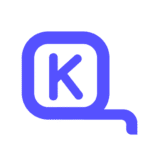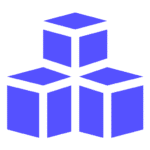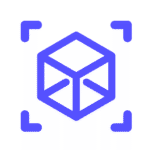Managing container costs is tricky. Containers run across clusters, workloads spike and fall, and usage patters are constantly fluctuating. Without a clear strategy, unexpected expenses can quickly add up.
This article breaks down the key principles of Kubernetes cost management. We’ll cover:
- The main factors driving spend
- Common challenges Platform and DevOps teams face
- Best practices for cost visibility and control
- Tools that will help you stay efficient and within budget
This is part of a series of articles about Kubernetes Pricing
What is Kubernetes Cost Management?
Kubernetes cost management is the practice of monitoring, optimizing, and controlling the expenses of running workloads in Kubernetes environments. It centers on analyzing resource usage, reducing waste, and using the right tools to improve cost efficiency.
When done well, cost management helps ensure clusters are right-sized and aligned with business priorities, supporting scalable, predictable operations. As Kubernetes adoption grows and hybrid or multi-cloud environments become the norm, managing cost and complexity across clusters is becoming a critical challenge for platform and infrastructure teams.
Benefits of Effective Kubernetes Cost Management
Effective Kubernetes resource utilization leads to optimal cost management and budget control, empowering teams to maintain operational efficiency without compromising performance. By identifying inefficiencies and providing actionable insights, it helps organizations scale sustainably while maximizing ROI.
1. Improved Resource Utilization
- Proper cost management in Kubernetes means that the right amount of compute, memory, and storage is allocated according to actual demand.
- Dynamic adjustment of resources is achieved through tools like Kubernetes Horizontal Pod Autoscaler (HPA) or using ScaleOps, which prevent over-provisioning while ensuring that applications perform efficiently.
2. Enhanced Budget Control and Forecasting
- A better view of cloud expenditures gives Kubernetes cost management more precise budget forecasts.
- By integrating cost tracking into your workflow, the organization can avoid overspending and manage costs effectively, considering future expenses and making workload adjustments.
3. Increased Operational Efficiency
- Automation of scaling and resource allocation helps with cost management by minimizing manual intervention and reducing operational overhead.
- With automated scaling and optimized placement of resources, Kubernetes clusters can run more efficiently, enhancing overall operational performance.
4. Reduced Waste and Over-Provisioning
- Over-provisioning resources can be costly. By leveraging cost management practices, organizations can optimize resource use.
- Right-sizing pods, setting resource requests and limits, and managing scaling behaviors reduce waste and cut down on paying for unused capacity.
5. Better Scalability Management
- Kubernetes supports both horizontal and vertical scaling to handle varying workload demands, but without effective cost controls, scaling can lead to high expenses.
- Cost-aware strategies like using Vertical Pod Autoscaler (VPA) for reactive scaling or optimizing cluster configurations can balance performance and cost. This approach ensures efficient resource usage and simplifies cost allocation and reporting.
6. Simplified Cost Allocation and Reporting
- Kubernetes cost management makes it easier to allocate costs to the respective teams, projects, or applications.
- The use of tags, labels, and namespaces allows for the tracking of workloads that use the most resources and, therefore, provides clear insights into budgeting and accountability.
7. Enhanced Cloud Cost Transparency
- Effective Kubernetes cost management ensures clear visibility of cloud expenses, even in complex setups like on-premises, hybrid, or multi-cloud environments.
- Modern tools provide functionality to monitor real-time Kubernetes cloud cost expenses, hence better oversight of finances and decision-making capabilities.
Kubernetes Cost Management vs. Kubernetes Cost Monitoring
Kubernetes cost monitoring helps you understand where your cloud spend is going, tracking usage by namespace, workload, or label. But cost management goes further. It doesn’t just show you inefficiencies; it helps you fix them.
Monitoring gives you visibility. Management drives action.
Cost management includes proactive tactics like:
- Rightsizing over-provisioned workloads
- Autoscaling based on actual demand
- Schedueling non-critical resources to avoid idle time
Kubernetes Cost Management Challenges
Despite its flexibility and power, managing costs in Kubernetes environments presents several challenges due to the complexity of container orchestration and the dynamic nature of workloads. Below are some of the key hurdles organizations face:
Total Cost Allocation
Kubernetes clusters with multiple teams and workloads make cost allocation difficult. Shared resources like compute, storage, and networking require accurate tagging and tracking, often done manually.
Reduce Visibility
The abstraction of Kubernetes components can obscure resource consumption at the pod or container level, hiding inefficiencies and over-provisioning, which leads to hidden costs.
Multi-Cloud Complexities
Running Kubernetes across multi-cloud environments adds complexity due to different pricing models from providers and private clouds. Managing and comparing costs across these platforms requires careful attention.
Cost-Saving Opportunities
Identifying optimization opportunities, such as right-sizing, spot instances, and storage optimization, is critical. However, these often go unnoticed without continuous monitoring and analysis.
Effective Resource Scaling
Kubernetes supports both horizontal and vertical scaling, but poor scaling strategies, such as over-provisioning or failing to scale down, can lead to inflated costs. Vertical scaling is often underutilized but can be more cost-effective.
Best Practices to Manage Kubernetes Costs
Optimizing Kubernetes costs isn’t about cutting corners. It’s about making sure the resources you’re paying for are actually delivering value. That means balancing performance, reliability, and cost-efficiency across your clusters, and putting systems in place to keep it all under control.
1. Set Requests and Limits Properly
Defining CPU and memory requests and limits is basic Kubernetes hygiene, but a lot of developer and application teams are getting it wrong. Teams typically overprovision to “be safe” (and avoid that dreaded 3am wakeup outage call). But this leads to resource waste.
So what can you do? You could start by looking at usage data and use your observability stack to see how pods behave under typical and peak loads, and then set those requests accordingly.
But manual tuning doesn’t scale. As environments grow and workloads shift, request values drift out of sync with reality. That’s where resource optimization platforms come in. These solutions continuously monitor real usage and adjust pod-level resources in real time, so you get the efficiency of rightsizing without the overhead of chasing YAML. It’s especially useful in production, where stability and cost control both matter.
2. Use Autoscaling Where It Makes Sense
Autoscaling matched resource supply to demand. But only when it’s applied to the right workloads and configured correctly. Horizontal Pod Autoscaler (HPA) is useful for stateless services with variable traffic. Cluster Autoscaler adjusts node counts to match overall resource needs.
But the key here is to make sure that HPA (or any other Kubernetes method of autoscaling) is driven by the right metrics and application context-awareness. For example, ScaleOps Replica Optimization automatically manages min and max replica counts according to actual demand, live application behavior, and cluster conditions. Instead of manually tweaking replica counts or overprovisioning “just in case,” the platform keeps services right-sized in real-time, with no changes required to your apps.
3. Leverage Spot Instances or Preemptible VM
Spot instances (on AWS) and preemptible VMs (on GCP) offer steep discounts compared to on-demand nodes, often up to 90% cheaper. But they can be reclaimed by the cloud provider at any time, which makes them risky for critical or stateful workloads.
Use them for fault-tolerant workloads like CI/CD jobs, batch processing, stateless services, or anything that can tolerate restarts. Create separate node pools for spot instances, and use taints and tolerations to ensure only safe workloads get scheduled there. To reduce the risk of capacity loss, diversify across instance types and availability zones. Most providers let you mix instance types in a single pool.
Also consider fallback strategies. Set up pod disruption budgets and ensure workloads can reschedule cleanly when a spot node disappears. The savings are real, but only if your workloads are designed to handle the churn.
4. Rightsize Pods and Nodes Automatically
Over-provisioning is one of the most common sources of wasted spend in Kubernetes. Pods are often given far more CPU or memory than they actually use, and clusters are built around worst-case assumptions that rarely happen in practice. The result: inflated node counts, underutilized hardware, and higher cloud bills.
Start by reviewing request vs. usage ratios for your workloads. Look for pods with consistently low utilization. On the node side, consider switching to smaller instance types or more flexible autoscaling groups if you’re consistently running below capacity. But manual reviews only get you so far.
To keep things efficient over time, use a resource optimization platform that continuously adjusts pod and node sizing based on real usage patterns. ScaleOps does this automatically, tracking live workload behavior and safely adjusting resources without impacting performance. It’s especially useful in production, where static configurations go stale quickly.
5. Integrate Cost Metrics in CI/CD
By the time a resource misconfiguration hits production, it has already created cost risk or worse, availability issues. The earlier you catch it, the better. That’s why it’s worth integrating resource and cost awareness directly into your CI/CD workflows.
The goal is not to block deployments. It is to give engineers visibility. Cloud cost should never be an afterthought or someone else’s job. Even lightweight checks in CI/CD can flag obvious inefficiencies early, when they are still easy to fix.
6. Enable Cluster Cost Allocation Tools
Without visibility, it is nearly impossible to manage Kubernetes costs effectively. Cluster cost allocation tools let you break down where spend is going across namespaces, workloads, teams, and labels. They provide the data needed to make informed decisions and identify inefficiencies that would otherwise be hard to spot.
Start with open-source options like OpenCost if you want something Kubernetes-native and vendor-neutral. Tag workloads consistently, and set up regular reporting by environment or team. The goal is not just to show spend, but to connect cost to actual resource usage. This makes it easier to hold teams accountable, prioritize optimization efforts, and avoid surprises at the end of the month.
7. Regularly Monitor and Evaluate Resource Utilization
Monitoring is essential, but visibility alone does not reduce cost. Tools like Prometheus or Grafana can surface trends in CPU, memory, and pod usage across your environments. If you are running multiple clusters, make sure your tooling supports aggregated views so you can spot inefficiencies at scale.
Build dashboards that highlight over-requested resources, low-utilization nodes, and workloads that consistently fall below their allocated requests. Schedule regular reviews to audit idle workloads, oversized requests, and unused services. These audits should be part of your regular operational cadence, not just an occasional cleanup task. Keeping resource allocations aligned with actual usage is key to long-term efficiency.
8. Set Budget Alerts and Limits
Budget alerts are useful, but they are reactive by nature. By the time an alert fires, the overspend has likely already happened. Alerts help you catch issues early, but they should not be your only line of defense.
Set clear cost thresholds by cluster, environment, or team, and use alerts as a final safeguard rather than your primary control. Pair them with proactive guardrails like resource policies, CI/CD checks, and cost allocation tools. The goal is to prevent budget surprises entirely, not just respond to them after they occur. Cost control works best when it is part of your regular workflow, not a one-off reaction.
What are Kubernetes Cost Management Tools?
Kubernetes cost management tools help teams understand and control cloud spend in environments where traditional billing models fall short. Kubernetes introduces abstraction and resource sharing, making it difficult to map infrastructure costs to specific teams, applications, or services using only your cloud provider’s native tools.
Most standard billing dashboards also struggle to give a unified, accurate view of spend across multi-cloud setups. They often miss key Kubernetes dimensions like namespace, pod, or label, and don’t account for how shared infrastructure or ephemeral workloads actually consume resources.
That’s where Kubernetes-native tools come in. They allow teams to:
- Attribute spend to the right team, product, or environment
- Spot and fix over-provisioned or idle resources
- Set budgets and receive real-time alerts on anomalies
- Automate cost-saving actions like workload rightsizing
For example, ScaleOps integrates natively with AWS Cost and Usage Reports (CUR), GCP Billing Export, and Azure Cost Management. This ensures you’re working with real, invoice-matching cost data that fully accounts for Savings Plans, Reserved Instances (RIs), and Enterprise Discount Programs (EDPs)
Top Kubernetes Cost Management Tools
Effective management of Kubernetes costs requires the right tools that offer insights into resource usage, enable Kubernetes cost optimization, and ensure efficient budgeting. Here are some of the top Kubernetes cost management tools and platforms to consider:
1. ScaleOps
ScaleOps is a real-time Kubernetes optimization platform that helps teams cut infrastructure costs by up to 80% without sacrificing performance or reliability. Unlike traditional scaling tools, ScaleOps goes beyond autoscaling by continuously optimizing pod and node resources across vertical, horizontal, and bin-packing dimensions.

It supports single-replica workloads with safe vertical scaling, prevents over-provisioning through predictive optimization, and integrates natively with HPA, KEDA, ArgoCD, and Flux. ScaleOps is fully self-hosted and compatible with any environment, cloud, hybrid, or on-prem, making it ideal for production-grade workloads including CI/CD runners, batch jobs, and rollouts.
By automating resource decisions at the workload level, ScaleOps eliminates manual tuning, reduces cloud waste, and ensures Kubernetes clusters are always rightsized for real demand.
2. Karpenter

Karpenter is an open-source Kubernetes cluster autoscaler that adjusts node provisioning based on live workload demands. It efficiently reduces excess capacity during peak times, offering flexible and cost-effective autoscaling. AWS now offers EKS Auto Mode, a managed Karpenter solution, further simplifying autoscaling in Amazon EKS clusters.
3. Kubernetes Dashboard

Kubernetes Dashboard is a built-in, basic monitoring tool for viewing the health and resource usage of Kubernetes clusters. It helps track pod and node statistics, offering a simple interface for small clusters or teams with simpler needs.
4. Kubecost

Kubecost provides granular insights into Kubernetes expenditures, helping to identify over-spending. It offers real-time resource utilization data and integrates with existing tools to optimize costs, with the ability to suggest cost-saving measures.
5. Anodot

Anodot uses machine learning to detect anomalies in real-time, alerting teams to unexpected cost spikes or spending patterns. It provides rapid insights, enabling quick responses to prevent budget overruns.
How to Choose a Kubernetes Cost Management Tool: Key Factors
When selecting a Kubernetes cost management tool, consider these essential factors:
| Criteria | Description |
|---|---|
| Ease of Installation | Look for tools that integrate easily with your Kubernetes setup, requiring minimal configuration and quick deployment. |
| Configuration Complexity | Choose tools that offer a balance between advanced features and ease of use, without complex or time-consuming setups. |
| Granular Cost Insights | Select tools that provide detailed cost breakdowns by namespace, pod, or workload for effective budget management. |
| Real-Time Monitoring and Reporting | Real-time monitoring allows quick responses to cost spikes. Opt for tools that offer up-to-date data for usage optimization. |
| Open-Source Support and Licensing | Open-source tools are flexible and cost-effective. Ensure the licensing model suits your customization and scalability needs. |
Conclusion
Kubernetes cost management is a crucial aspect of running efficient, scalable, and budget-conscious containerized applications. Organizations can significantly improve their resource utilization and control spending by understanding the key cost drivers, overcoming common challenges, and implementing best practices. With the help of platforms like ScaleOps, teams can gain the visibility and insights needed to optimize their Kubernetes environments. Try ScaleOps for free today!























